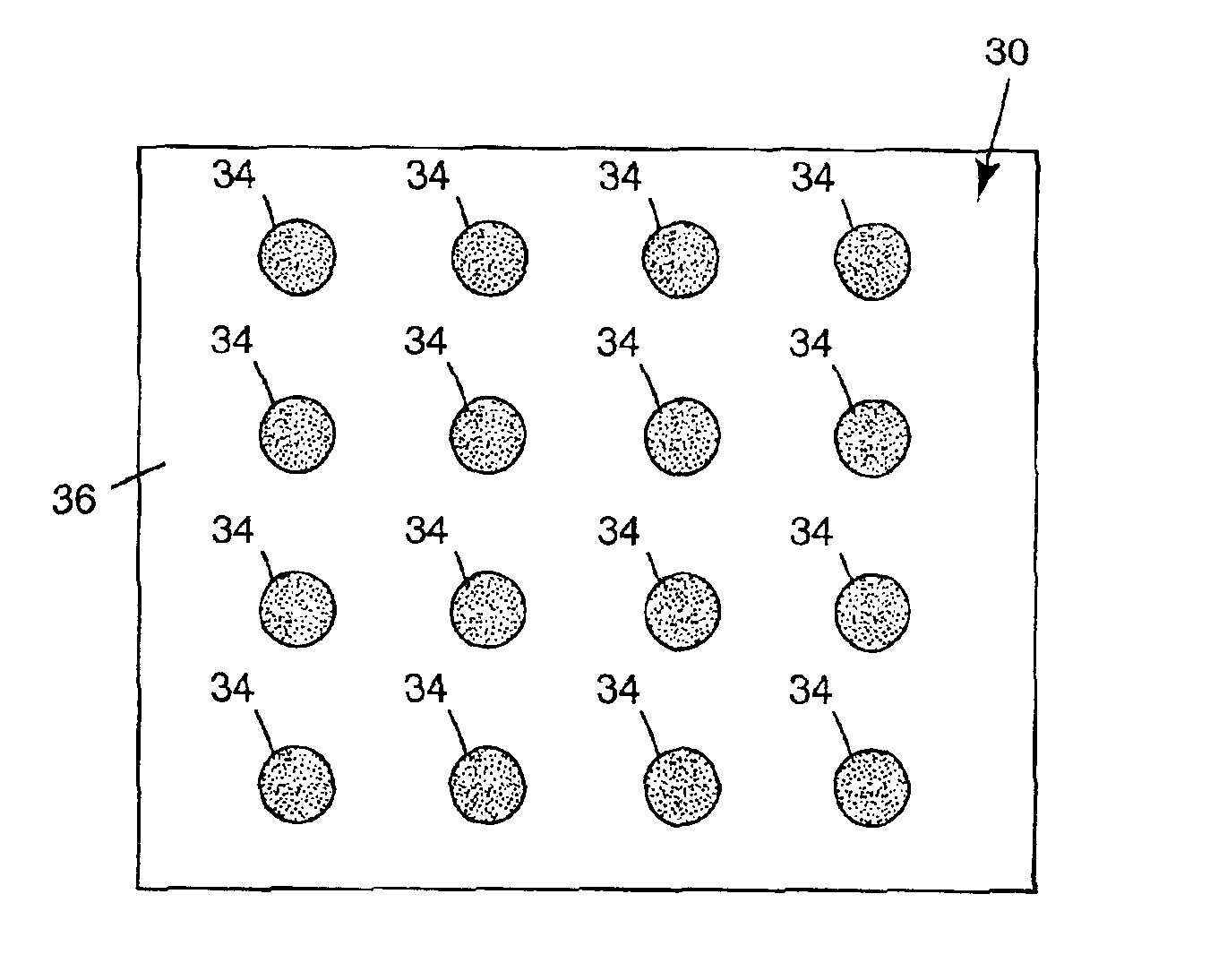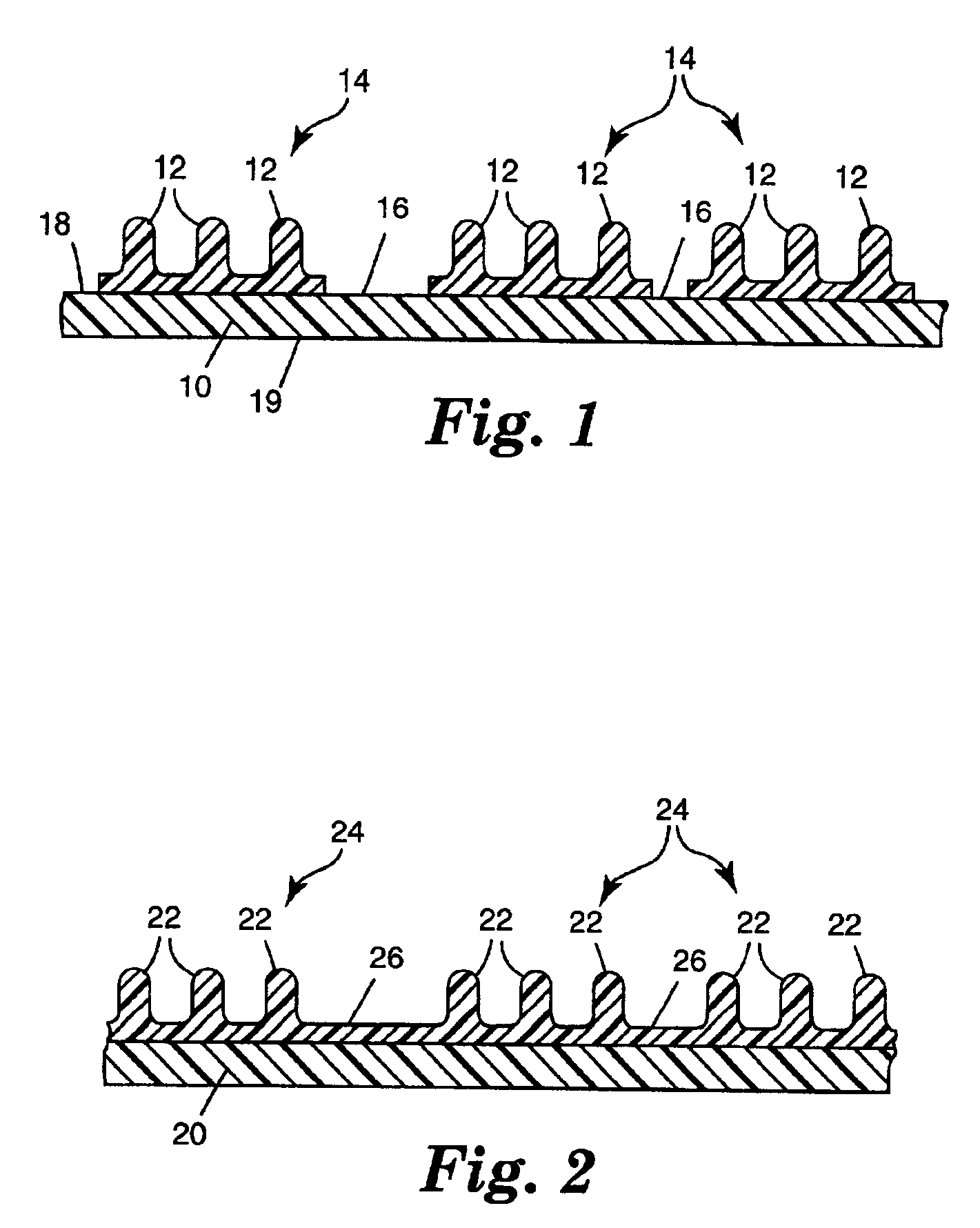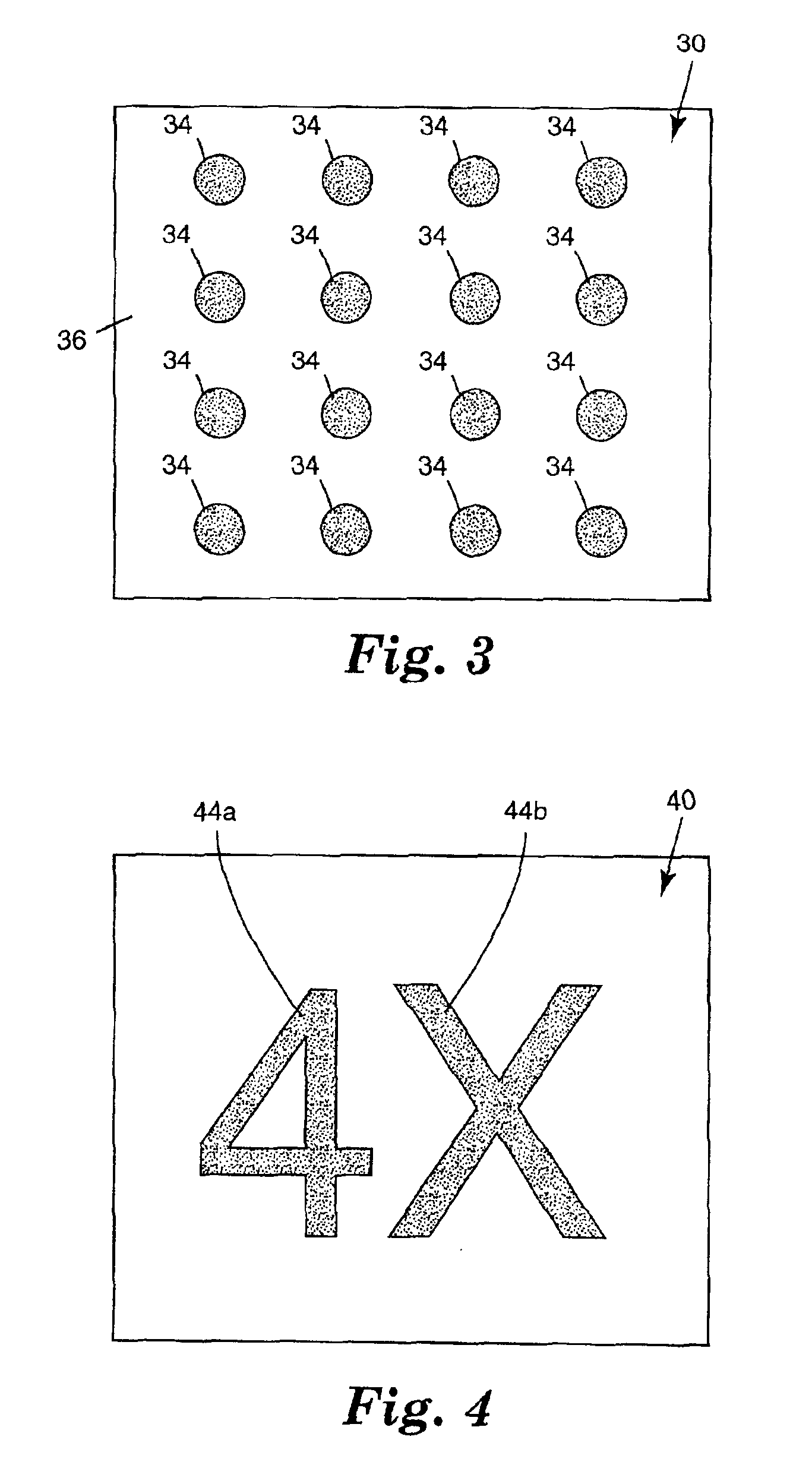Method for making a stem web
a technology of stems and webs, applied in the direction of surface layering apparatus, cloth making apparatus, manufacturing tools, etc., can solve the problem of not being easily adaptable to meet different applications and purposes, and achieve the effect of improving the mechanical fastening
- Summary
- Abstract
- Description
- Claims
- Application Information
AI Technical Summary
Benefits of technology
Problems solved by technology
Method used
Image
Examples
examples 1 and 2
[0047]Examples 1 and 2 demonstrate using breathable elastic substrates and bi-directional stem configurations.
[0048]In Example 1, Substrate A, an elastic breathable substrate, was first made as follows. A blown micro-fiber pressure sensitive adhesive (BMF-PSA) web made of HL-8156 block copolymer pressure sensitive adhesive ITSA) (HB Fuller Company, St. Paul, Minn.) was prepared by processing the solid adhesive through a grid melt system (J&M Laboratories, Inc. Dawsonville, Ga.) and then through a 30.5-cm wide blown microfiber (BMF) die at a rate of 2.0 kg / hr. The grid melt system had a hopper holding capacity of 40 kg and a melting capacity of 40 kg / hr. The melt pump volume was 1.68 cc / rev and the process temperature was 135° C. The BMF-PSA was discharged from a melt blowing die having circular smooth surface orifices (8 / cm) positioned approximately 10 cm above a vertical nip point formed by two 40.6-cm wide silicone coated rolls.
[0049]A layer of polypropylene spunbond nonwoven mate...
examples 3-5
[0054]Examples 3-5 demonstrate constructions having alternate shapes of stem regions. Examples 3-5 have stem regions that are continuous in the cross-web direction and are substantially perpendicular to the down-web direction of the web.
[0055]Example 3 was made in a manner similar to Example 1 and with the same substrate as Example 1. However, the stem formable material was deposited using a small orifice die tip with a single row of circular smooth surface orifices (8 / cm) rather than bead tip nozzles. The small orifice die tip had circular smooth surface orifices (8 / cm) with 0.51 mm diameter. The stem formable material was deposited at a rate of 0.7 kg / hr.
[0056]The resulting stem-surfaced regions were cross direction stripes approximately 0.5 cm wide and separated approximately 2 cm from each other. Each region had on average approximately 8 stems across its width and 16 rows / cm cross web. The webs were very ductile and breathable, and fastened to themselves when wrapped in either ...
example 6
[0059]Example 6 demonstrated a construction having an inelastic substrate and another process of making discrete regions of stem formable material.
[0060]A stem formable material, Monthane™ 440, was passed through a glue gun (available as PAM 600 Spraymatic™ from Fastening Technology, Inc, Charlotte, N.C.). The circular exit of the glue gun was approximately 1.5 mm diameter and the process temperature was about 232° C. The molten material was discharged from the gun in discrete amounts as the gun was repeatedly triggered on and off at a frequency of 1.0 pulse per second. The discrete amounts or spots of material were deposited directly onto Substrate B. The web was then conveyed approximately 20 cm into a vertical nip point formed by two 40.6-cm wide silicone coated rolls at a speed of 4.6 m / min. The nip force was 1.7 kN across a 30.5 cm wide web. The first roll had a tooled surface that contained cavities with diameters of about 0.25 mm, depths in excess of about 0.80 mm and spacing...
PUM
| Property | Measurement | Unit |
|---|---|---|
| Fraction | aaaaa | aaaaa |
| Fraction | aaaaa | aaaaa |
| Fraction | aaaaa | aaaaa |
Abstract
Description
Claims
Application Information
 Login to View More
Login to View More - R&D
- Intellectual Property
- Life Sciences
- Materials
- Tech Scout
- Unparalleled Data Quality
- Higher Quality Content
- 60% Fewer Hallucinations
Browse by: Latest US Patents, China's latest patents, Technical Efficacy Thesaurus, Application Domain, Technology Topic, Popular Technical Reports.
© 2025 PatSnap. All rights reserved.Legal|Privacy policy|Modern Slavery Act Transparency Statement|Sitemap|About US| Contact US: help@patsnap.com



